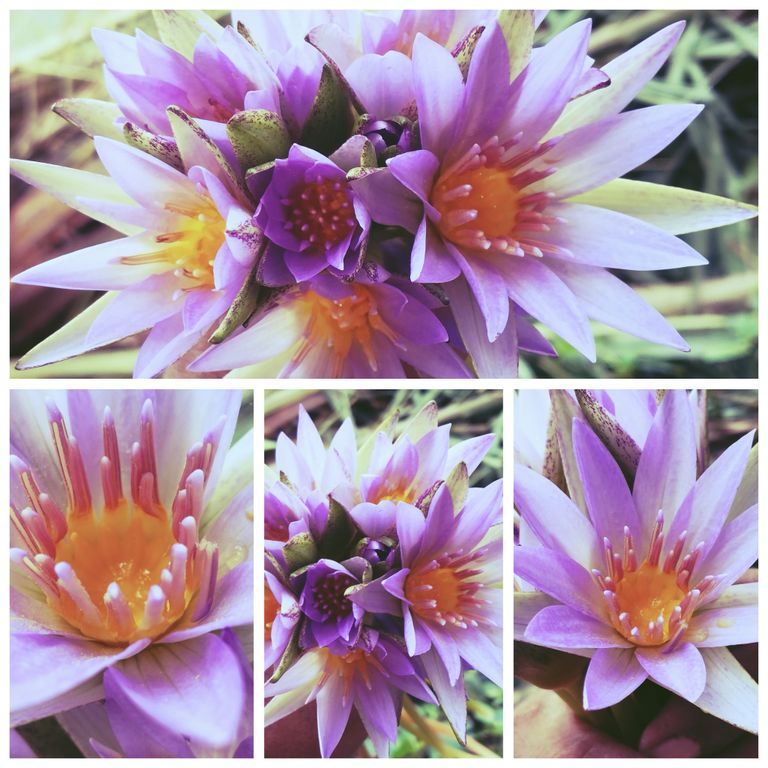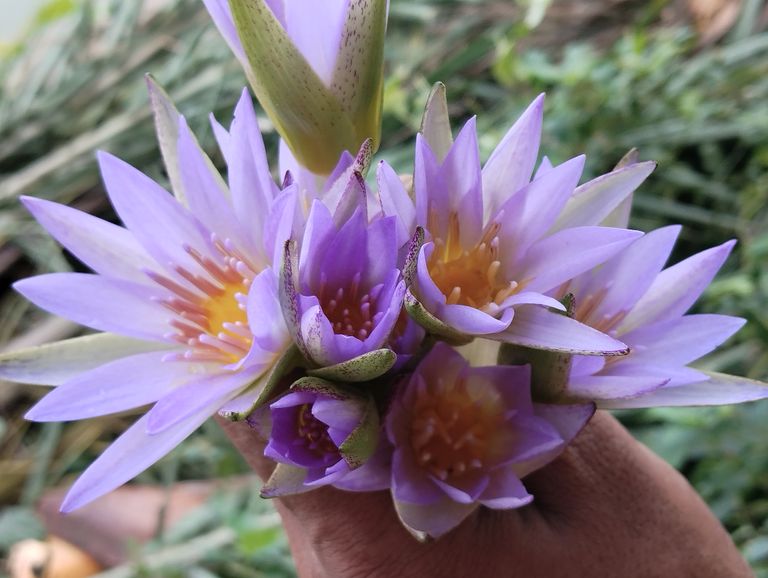The Beauty of the Water Lily A Symbol of Grace and Elegance.

Water lilies, known as "Shapla" in Bengali, are one of the most captivating and symbolic flowers found in the serene waters of ponds, lakes, and rivers across South Asia, particularly in Bangladesh. This remarkable flower, with its delicate petals and floating leaves, has been celebrated for centuries not only for its beauty but also for its symbolic significance. In this blog, we’ll dive deep into the splendor, symbolism, and environmental importance of the water lily, exploring why it has captured the hearts of people throughout history.
- The Unique Appearance of the Shapla
The water lily is a flower that instantly stands out due to its distinctive features. Shapla blossoms have wide, floating leaves that rest gracefully on the water’s surface. The petals can be white, pink, purple, or sometimes even blue, and their delicate, multi-layered structure gives the flower an ethereal quality. The sight of these flowers, with their serene, almost mystical appearance, has a calming effect that can transform any water body into a scene of tranquil beauty.
In the morning, as the sun rises, Shapla blooms, opening its petals to welcome the light. The interaction between sunlight and water creates an enchanting atmosphere, making it seem as if the flowers are glowing. At night, the petals gently close, resting until dawn. This daily cycle adds to the elegance and beauty of the water lily, connecting it to the rhythms of nature.
- The Symbolism of the Shapla
In many cultures, the water lily is more than just a beautiful flower; it is a powerful symbol. In Bangladesh, the Shapla is the national flower, symbolizing peace, purity, and resilience. The flower’s ability to thrive in muddy waters and still bloom with untouched purity is often seen as a metaphor for rising above adversity.
In Hindu and Buddhist traditions, the water lily is also deeply significant. It represents rebirth, enlightenment, and purity, as it grows from the mud and ascends to the surface to reveal its immaculate beauty. This idea of emerging from the darkness into light is a common theme in both religions, and the Shapla, with its life cycle that mirrors this journey, has become a symbol of spiritual growth.
- The Cultural Significance of Shapla in Bangladesh
In Bangladesh, the water lily is woven into the fabric of local culture. It appears in poetry, songs, and art, and has inspired countless artists, musicians, and writers to capture its beauty. Many Bengali poets and writers have used the Shapla to symbolize hope, purity, and resilience in the face of hardship. Its image is often associated with the rural beauty of Bangladesh, depicting the simplicity and charm of the country’s natural landscape.
The Shapla is also a common subject in Bengali folk art, including Nakshi Kantha embroidery, where it is often depicted as a symbol of purity and beauty. In villages, women gather the Shapla for cooking as well, as the stems and leaves are used in traditional Bengali cuisine, adding both flavor and nutrition. This combination of beauty and utility makes the Shapla a cherished part of daily life in Bangladesh.
- The Environmental Role of the Water Lily
Beyond its cultural and aesthetic appeal, the water lily plays an essential role in maintaining the health of aquatic ecosystems. Its broad leaves provide shade to the water, helping to regulate temperature and prevent the growth of algae, which can harm other aquatic plants and animals. The presence of Shapla also helps oxygenate the water, benefiting fish and other organisms that depend on oxygen-rich environments.
Water lilies are a crucial food source for various aquatic animals, including fish and insects. Their flowers and leaves attract pollinators like bees and butterflies, which helps sustain the local ecosystem by encouraging biodiversity. Additionally, water lilies help stabilize the soil at the bottom of ponds and rivers, reducing erosion and maintaining water clarity.



- The Water Lily in Art and Literature
Throughout history, artists and poets have been inspired by the water lily’s beauty and symbolism. From Claude Monet’s famous paintings of water lilies to Rabindranath Tagore’s evocative poetry, this flower has captivated creative minds. In Monet’s work, water lilies are painted with a focus on light and color, emphasizing the flower's ethereal beauty and the calming influence it has on the viewer.
In Bengali literature, the Shapla appears as a symbol of peace and tranquility. It is often used to evoke the serenity of rural life, representing the quiet beauty of the countryside. Famous poets like Jibanananda Das have depicted the flower as a part of Bengal’s natural charm, celebrating its elegance and purity.



- Why the Shapla’s Beauty Resonates with Us
The water lily’s ability to bloom in muddy waters and yet remain pristine is a quality that speaks to the human spirit. Its journey from the depths of murky water to the surface, where it opens its petals to the sunlight, mirrors the journey we all face in life. No matter how challenging the circumstances, we can rise above them, blossoming into our true selves.